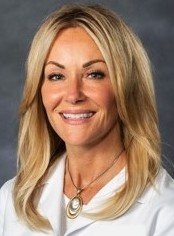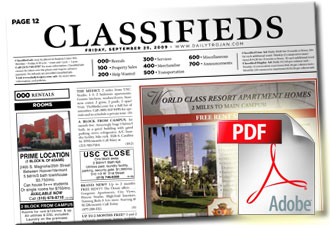Emma 09:55:32
Welcome back to the news podcast. I’m Emma and today we will talk about the Feb. 6 ASUU debate hosted by the Chronicle. The Associated Students of the University of Utah, also known as ASUU, is our campus student government, and the elections for new administration are coming up fast. The Chronicle hosts a debate each year between candidates to discuss relevant topics that will inform the student body about the values and goals of potential candidates. ASUU works hard to connect students with essential resources and services, sponsor activities and programs and speak up for students when communicating with university officials. To watch and listen to the debate, head over to the Chronicle’s Instagram @thechrony. News writer Alison Stuart has joined us today to discuss the debate. She recently wrote a story for the Chronicle about the debate, which is posted online, so be sure to check it out. Nice to meet you Alison, thank you for joining us today.
Allison 09:56:34
Hello. Yes. Thanks for having me as well.
Emma 09:56:36
Alison, can you tell us about how many tickets there are and what a ticket is?
Allison 09:56:41
Yeah. So this year for the ASUU elections there are three tickets. What a ticket is it’s composed of three students who are running for the presidency. That includes a presidential candidate, a VP of university relations candidate, and then a VP of student relations candidate.
Emma 09:56:58
Can you tell us a little bit about each ticket? Let’s start with the Karabegovic ticket.
Allison 09:57:03
Yeah, so this ticket is composed of presidential candidate Sven Karabegovic.
Sven 09:57:08
Hello, everybody. My name is Sven Karabegovic, and we are obviously from the Karabegovic ticket.
Allison 09:57:15
And Alicia Baker as the vice president of student relations.
Alicia Baker 09:57:18
And then I am Alicia Baker.
Allison 09:57:20
And then Abukar Hassan as the vice president of university relations.
Abukar Hassan 09:57:25
Yeah, my name is Abukar Hassan. I’m a junior here at the University of Utah.
Allison 09:57:28
And what this ticket is kind of like running on, they really want to empower student voices. This ticket also is focusing a lot on environmental issues. And they really want to work on things on campus, such as campus safety, sustainability, community and then again, making the student voices heard.
Emma 09:57:45
Awesome. And what about the VKW ticket?
Allison 09:57:50
Yeah, for sure. Um, this ticket is composed of three first-generation students and that is something that’s really big in their campaign, really making their unique experiences a part of how they plan to change ASUU. So this is composed of Muskan Walia for president.
Muskan Walia 09:58:06
Hi, guys. I am Muskan. And I use she/her pronouns.
Allison 09:58:09
Yovanni Valdez, who is running as vice president of student relations.
Yovanni Valdez 09:58:13
Hello, hello, everyone. My name is Yovanni Valdez.
Allison 09:58:16
And then Ravi Kaur as the VP of university relations.
Ravi Kaur 09:58:19
Hi, I’m Ravi Kaur.
Allison 09:58:21
And for their campaign, they really want to make sure ASUU is more accessible to students in the future. At the debate, they really mentioned like students maybe not knowing about ASUU or like how they can serve them. And then again, like I said, using those unique identities such as first-gen students to serve the student body.
Emma 09:58:41
That’s great. And lastly, the O’Leary ticket.
Allison 09:58:45
Yeah, for sure. So the O’Leary ticket is our third and final ticket for this year. It’s composed of Jack O’Leary as the presidential candidate.
Jack O’Leary 09:58:53
Cool, can everyone hear me? Awesome. Hi, I’m Jack O’Leary. I use the he/him pronouns.
Allison 09:58:58
Vice president for student relations is Parker Madsen.
Parker Madsen 09:59:01
Hey guys. I’m Parker Madsen.
Allison 09:59:03
Then VP of university relations is Chloe Shewell.
Chloe Shewell 09:59:07
Hi, everyone. My name is Chloe Shewell.
Allison 09:59:09
And what they’re kind of looking at is three pillars: acceptance, affordability and accessibility. They’re kind of looking to reform tuition on campus, really making sure students get all the like scholarship money that ASUU sets aside and they are looking to build a multicultural center on campus.
Emma 09:59:29
Okay. So I know that campus safety was a pretty big topic that was brought up at the debate. Can you tell us a bit about what each ticket said surrounding that specific topic?
Allison 09:59:39
Yeah, for sure. Um, the first thing that comes to mind for me is Chloe Shewell, who is running under the O’Leary ticket, and she is a student athlete on the track team here at the U. And I know that she mentioned that having early morning classes and late at night classes presents a lot of safety issues for her. She really wants to advocate for increased lighting on campus.
Chloe Shewell 09:59:58
So, safety is a number one priority for me, especially being a student athlete. Having a majority of my time in the day taken up by athletics, I have most of my classes really early in the morning or really late at night, which has me walking around campus, like at all hours of darkness. So, I would like to advocate for increased lighting here on campus, especially in the really dark areas.
Allison 10:00:19
As far as VKW ticket goes Ravi Kaur said that the base kind of issue with safety on campus stems from hate.
Ravi Kaur 10:00:26
So, VKW is very focused around progressing safety across campus. And when we look at what is happening on campus, we’re seeing that students aren’t worried about getting robbed in the dark. Lighting is not the primary problem. The Cleary Report confirms this. The biggest problem on campus is centered around the systemic issues of racism, misogyny and, frankly, hate.
Allison 10:00:50
And some issues she wants to work on for her ticket is bringing forth mandated wellness checks, having more accessibility to bus routes and working with the Campus Safety Office closely. And then in terms of like the Karabegovic ticket, they are looking to implement like a three digit safety number on campus, similar to like 911. And that’s one of the goals they want to achieve in terms of safety.
Emma 10:01:12
And let’s talk about the multicultural center that the O’Leary ticket is running on. What is their proposal?
Allison 10:01:18
Yeah, so the proposal, specifically outlined by Parker Madsen was that there would be a multicultural student center built on campus. They’re aiming for it to be built somewhere in central campus. And I know there’s been talk of the Student Union Building being rebuilt, and one of their goals is to have it implemented in there. Rather than having it be somewhere on like the sides of campus where it’s not as accessible to students who attend here. Basically, their goal is to create a space where students who are a part of like certain cultural identities can go and learn about each other. And even students who aren’t in any of those cultural identities can go and hang out and learn, be with other students of other backgrounds.
Emma 10:02:01
How did the other tickets respond?
Allison 10:02:03
Yeah, so, um, Alicia Baker really had a response to that, she said that as a Black woman, she did not agree with the building of a multicultural center on campus.
Alicia Baker 10:02:15
I think it’s just — I think it’s hard hearing that as a person of color, feeling that, like, oh, like, an all white ticket is like going to create a space for me, like, where all minorities can, like, hang out and like learn.
Allison 10:02:31
Something she mentioned is that she felt like this proposal and this idea would kind of take away from existing centers on campus that have been working really hard for the last couple of years to really be that space for students of those identities.
Alicia Baker 10:02:44
I think it sort of takes away from places like the Black Cultural Center and the Indigenous American Center and the Asian Resource Center that’s trying to get built. These communities are trying to create spaces for themselves with the help of the university. And it’s sort of dismissing their wants, when clearly they’re saying what they want. And then additionally, CESB is here for a reason. We should sort of be uplifting CESB rather than like creating something new when they’re already struggling, to be honest.
Emma 10:03:17
All right. Is there anything else you’d like to add?
Allison 10:03:21
Yes, in terms of this election, this is different than, for example, last year’s, because there are three tickets this time around, as compared to last year where there was just one ticket running unopposed. So this year, there is more of an opportunity to really make your voice heard. And I would encourage any student listening to this, or who reads my story, to vote when it comes time, because it’s a great way to get involved on campus and hopefully, see some change that we want to see through our new ASUU presidency. And one more thing on that voting is open on Feb. 21, and then runs through the 24th.
Emma 10:04:02
All right, thank you so much, Allison, for joining us today.
Allison 10:04:04
Yay, thanks for having me.
Emma 10:04:07
All right, students can vote through the University of Utah student homepage under the ASUU tab. Voting will take place Feb. 21-24. Election results will be announced on Feb. 25. Thank you so much for tuning in to this week’s episode of the news podcast. Make sure to listen in next week.
e.ratkovic@dailyutahchronicle.com
.sno-63eacc8b55d64 {
width: calc(100% – 40px); margin: 30px auto !important; float: none;}
.sno-63eacc8b55d64 h5 {
color: #000000;
}








